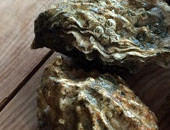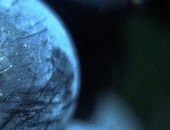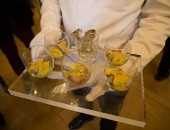Many of the discoveries one makes of the vineyard are drawn from conversations between Alexandre de Lur Saluces and Koffmann, including the revelation that Lur Saluces still regards as a mystery 'the strange layout and history behind the types of grapes.'
The film opens with a wonderful aerial view of the estate which serves to put what follows into context — it is hugely impressive. The documentary then starts with an event which they await at d'Yquem like the 'coming of the messiah' the growth of the botrytis cinerea, so-called 'noble rot'. During each season apart from reviewing the key activities of the estate we learn more about the history of the Château, and the people that work there.
The film covers all aspects of the viticulture (well, not all) Alexandre de Lur Saluces reckons that each vine has 50 tasks attached to it during the year — vine pruning, thinning-out, 'dâchaussâe' etc — these jobs may make a difference to the wine and Lur Saluces admits that 'one could possibly omit some of them with no appreciable effect. Perhaps.' But why find out? And it is this attention to detail combined with low yields that makes it so unique: ten vine plants are required to make one bottle of Yquem.
There is also a wonderful scene visiting their great collection of bottles — treasure collected by every generation for over 200 years. Lur Saluces says that the reason for its longevity — is the 'higher than normal alcohol content and natural sugar which means it will keep 150 years.' They look at bottles running back through the great vintages: 1967, 1945, 1937, 1917, 1900, 1899 and even 1784 — probably part of the Jefferson collection.
It's a film which merits revisiting and with each pass one learns something new. The pace of the documentary is perfectly judged allowing one the opportunity to savour each scene.
Lur Saluces states that 'Yquem basically belongs to those whom love it and no matter from whence they come... it belongs to its admirers.' This film will enable you to have a piece of the Château at home.
The DVD comes with a few bonus features which will continue to delight you. One, in particular, deserves special mention: 'Yquem et le Stradivarius'. Film-maker Jaud has picked up on a theme which was mentioned in passing during the film - that 'the soil of Yquem is like that of a Stradivarius' to quote Lur Saluces. Jaud puts Roland Daugareil (first solo violinist of the Orchestre de Paris) opposite Lur Saluces, in between them is a glass counter containing some wonderful vintages of d'Yquem and balanced on top is Daugareil's Stradivarius 'Txinka'. What follows is a fascinating description of his violin interspersed with comparisons from Lur Saluces on its similarities with the soil of d'Yquem; scenes of symbolism, analogy and metaphor. It is hugely imaginative and the whole film is a completely under-stated but consummate piece of film-making — simple but profound — whilst Daugareil plays some of his repertoire thus illustrating the point not mentioned in their comparison: that it takes a virtuoso to bring out the true qualities of the Stradivarius. After seeing this film there is no doubt that Lur Saluces and his team (dare I use the term 'orchestra') are in every way a match to Daugareil and his talents. Excellent. This film on its own is worth the price of the DVD.
Related link: Web site of film-makers - J + B Sâquences










